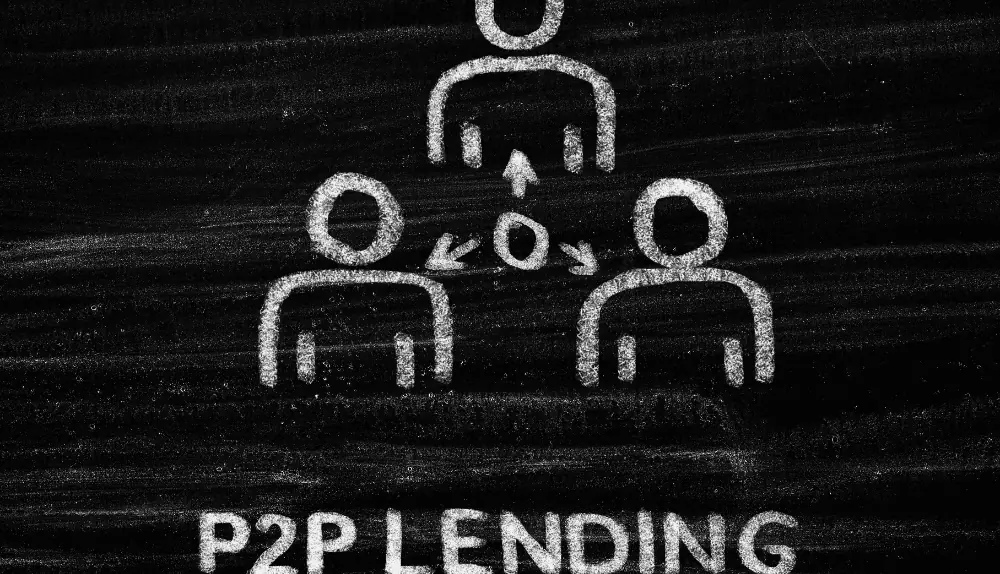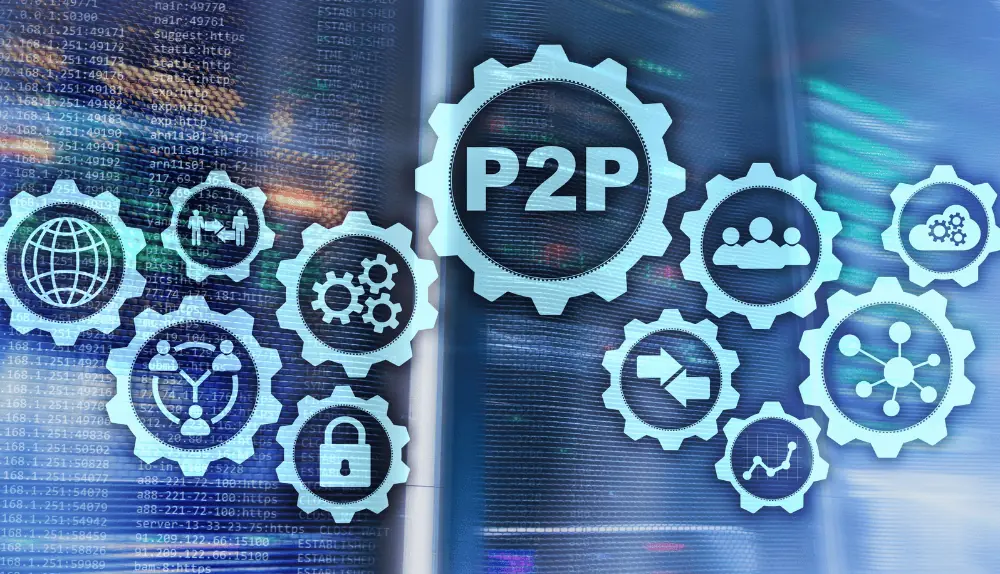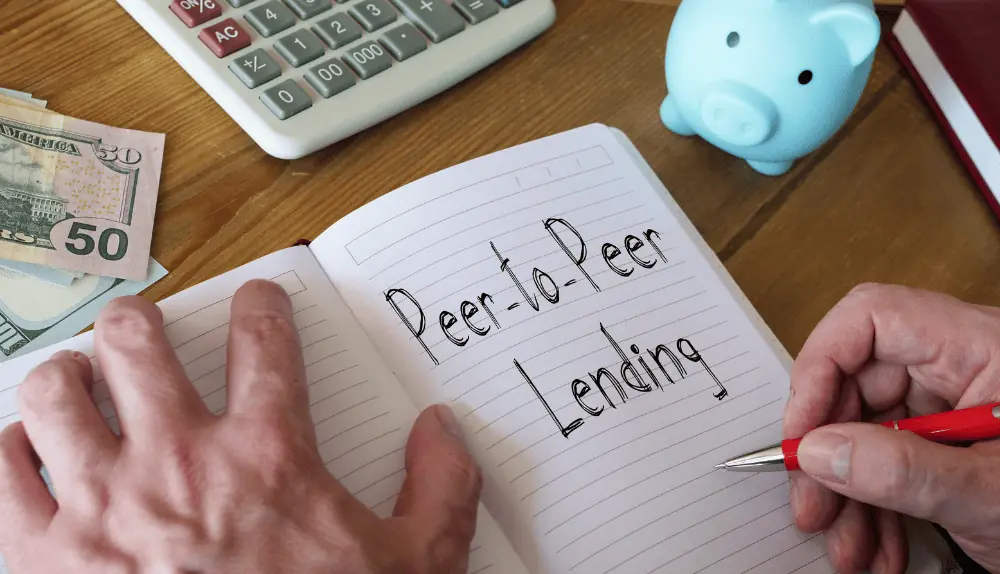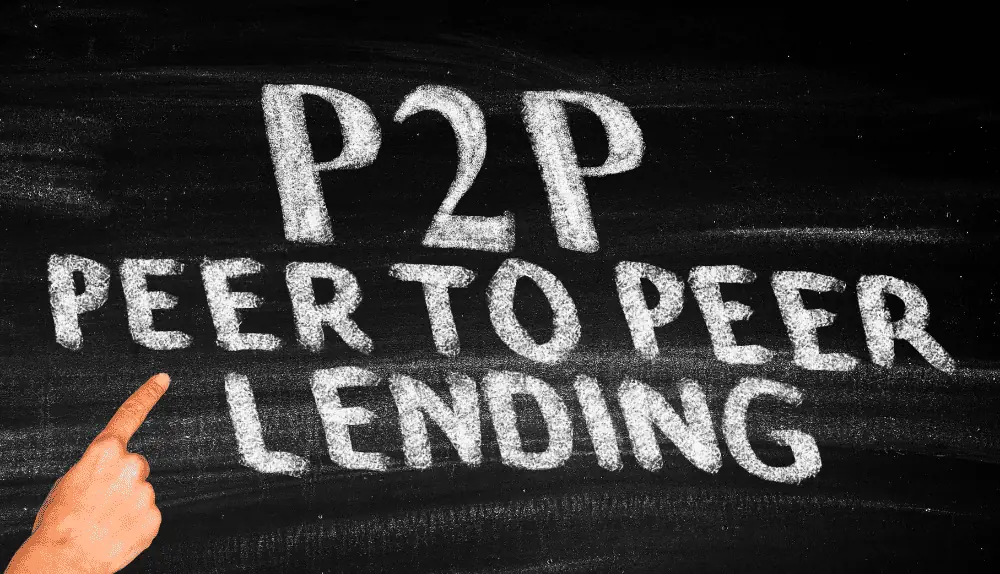In the vast landscape of financial services, a remarkable innovation has emerged, reshaping the way people borrow and lend money. Peer-to-peer lending, a dynamic and rapidly growing phenomenon has revolutionized traditional lending models by connecting individuals directly, cutting out the middleman, and fostering financial empowerment. But what exactly is peer-to-peer lending? How does it work? In this captivating exploration, we will delve into the intricacies of this groundbreaking approach, uncovering the principles behind its success and illuminating the path toward a more inclusive and transparent financial future. Prepare to embark on a journey that reveals the inner workings of peer-to-peer lending and its profound impact on borrowers and lenders alike.
What is Peer-to-Peer Lending?
Peer-to-peer lending, often referred to as P2P lending, is a dynamic financial model that enables individuals to borrow and lend money directly without the involvement of traditional financial institutions such as banks. This innovative approach harnesses the power of technology and connectivity to connect borrowers and lenders through online platforms, creating a decentralized lending marketplace.
At its core, peer-to-peer lending operates on the principle of cutting out the middleman, allowing borrowers to obtain loans at potentially lower interest rates compared to traditional lenders while providing lenders with an opportunity to earn attractive returns on their investment. The process begins with borrowers submitting loan applications, outlining their financial needs and creditworthiness. Lenders then have the opportunity to review these loan requests and assess the associated risks before deciding whether to fund them.
Once a loan is approved, the funds are transferred directly from the lenders to the borrowers, facilitated by the P2P lending platform. Borrowers repay the loan, typically with interest, over a fixed period, and the platform ensures the collection and distribution of payments to the lenders.
Overall, peer-to-peer lending offers a mutually beneficial alternative to traditional lending, empowering individuals to take control of their finances and facilitating access to credit for those who may not meet the stringent criteria set by traditional financial institutions.
How Does Peer-to-Peer Lending Work?

To initiate the process, borrowers create profiles on peer-to-peer lending platforms and submit loan applications. These applications include details about the desired loan amount, purpose, repayment period, and other relevant financial information. Additionally, borrowers may be required to provide supporting documents, such as income verification and identification, to establish their creditworthiness.
Lender Evaluation and Loan Listing
After receiving loan applications, the peer-to-peer lending platform evaluates the borrowers’ creditworthiness, employing various risk assessment techniques. This evaluation process may involve credit checks, income verification, and analysis of the borrower’s financial history. Based on this evaluation, the platform assigns an interest rate or risk rating to each loan.
Once approved, the loans are listed on the platform, allowing lenders to browse and select the loans they wish to fund. Lenders can assess loan listings by considering factors such as the borrower’s credit profile, loan purpose, interest rate, and risk rating. They have the freedom to diversify their investment by spreading their funds across multiple loans.
Loan Funding and Disbursement
When lenders decide to fund a loan, they commit the desired amount and transfer the funds to the peer-to-peer lending platform. The platform accumulates funds from multiple lenders to fulfill the borrower’s requested loan amount. This pooling of funds allows for diversification and risk mitigation.
Once the loan is fully funded, the platform disburses the loan amount to the borrower. The borrower receives the funds directly in their bank account or through another specified method.
Loan Repayment and Investor Returns
Borrowers are required to repay the loan amount, typically in monthly installments, over a predetermined period. The platform facilitates the collection of these repayments from borrowers, including any interest accrued. It then distributes the payments proportionally among the lenders who funded the loan.
Lenders receive their share of the loan repayments, including principal and interest, based on the amount they invested. This process continues until the loan is fully repaid, allowing lenders to earn returns on their investment.
Platform Fees and Servicing
Peer-to-peer lending platforms generate revenue by charging fees to both borrowers and lenders. Borrowers may be subject to origination fees or processing charges, while lenders may face fees based on the interest earned or the amount invested. These fees contribute to the platform’s operational costs and provide a source of income for the platform operators.
Furthermore, the platform is responsible for managing loan servicing tasks, such as payment collection, loan monitoring, and addressing any borrower inquiries or issues. This ensures a smooth and efficient experience for both borrowers and lenders throughout the loan term.
Is Peer-to-Peer Lending Safe?

Peer-to-peer lending, like any financial activity, carries inherent risks. However, when conducted through reputable and regulated platforms, peer-to-peer lending can be considered relatively safe. Here are a few factors to consider:
Platform Regulation
It is crucial to choose a peer-to-peer lending platform that operates under proper regulations and is licensed or authorized by relevant financial authorities. Regulation helps ensure that the platform adheres to certain standards, including transparency, risk management, and borrower and lender protection.
Risk Assessment and Credit Checks
Reputable peer-to-peer lending platforms conduct thorough risk assessments and credit checks on borrowers. They evaluate borrowers’ creditworthiness and provide risk ratings or interest rates accordingly. This helps to mitigate the risk of default and ensures that lenders have sufficient information to make informed investment decisions.
Diversification
Spreading your investment across multiple loans can help minimize risk. By diversifying your lending portfolio, you reduce the impact of any potential defaults or late repayments on your overall returns. It is advisable to invest in loans with different risk profiles and to avoid allocating a significant portion of your investment to a single borrower.
Transparency and Information
Reliable platforms provide transparent information about borrowers, including their credit history, loan purpose, and financial details. Lenders can review this information before deciding to invest. Transparency allows lenders to assess the risk associated with each loan and make informed investment choices.
Investor Protection Measures
Some peer-to-peer lending platforms offer additional investor protection measures, such as reserve funds or loan buyback guarantees. These mechanisms can provide an extra layer of security by compensating lenders in the event of borrower default.
Despite these safeguards, it’s essential to recognize that peer-to-peer lending still carries some level of risk. Borrower defaults, economic downturns, and platform-related risks are factors to consider. It’s advisable to carefully evaluate the platform’s reputation, track record, and risk management practices before engaging in peer-to-peer lending. Additionally, diversifying your investment and investing only what you can afford to lose are prudent strategies to minimize risk.
Is Peer-to-Peer Lending Right For You?

Deciding whether peer-to-peer lending is right for you depends on your individual financial circumstances, goals, and risk tolerance. Here are a few factors to consider when assessing if peer-to-peer lending aligns with your needs:
Risk Tolerance
Peer-to-peer lending involves inherent risks, including the possibility of borrower defaults or late repayments. If you are risk-averse or cannot afford to lose the funds you invest, peer-to-peer lending may not be suitable for you. Consider your risk tolerance and evaluate whether you are comfortable with the potential risks involved.
Investment Objectives
When compared to standard savings accounts or bonds, peer-to-peer lending can provide investors more attractive returns. Peer-to-peer lending can fit your investing goals if you’re seeking for possibly greater rewards and are prepared to face the risks involved.
Financial Stability
Assess your financial stability and liquidity. Peer-to-peer lending typically involves locking your funds for a specified period until the loan is repaid. Ensure that you have sufficient funds available for your immediate needs and emergencies before considering peer-to-peer lending.
Diversification
Peer-to-peer lending platforms often encourage diversification by spreading your investments across multiple loans. If you are interested in diversifying your investment portfolio and have the time and resources to research and manage multiple loans, peer-to-peer lending could be a suitable option.
Research and Due Diligence
Engaging in peer-to-peer lending requires thorough research and due diligence. Evaluate different platforms, their track records, regulatory compliance, borrower assessment processes, and investor protection measures. Assess the platform’s transparency and the quality of the information provided about borrowers. Only invest through reputable and well-established platforms.
Alternative Options
Consider other investment opportunities available to you, such as stocks, bonds, mutual funds, or real estate. Compare the risk-return profile of peer-to-peer lending with these alternatives to determine if it aligns with your overall investment strategy.
It is important to remember that each individual’s financial situation and goals are unique. It is advisable to consult with a financial advisor who can assess your specific circumstances and provide personalized advice regarding whether peer-to-peer lending is suitable for you.
Pros and Cons of Peer-to-Peer Lending
Pros
- Higher returns compared to traditional savings accounts
- Access to credit for borrowers with limited options
- Diversification opportunities for lenders
- Faster loan approval process
- Potentially lower costs and fees
Cons
- Risk of borrower defaults or late repayments
- Lack of government backing and deposit insurance
- Limited regulatory oversight
- Susceptibility to market volatility
- Lack of personal interaction and relationship-building compared to traditional lenders
Final Words
In conclusion, peer-to-peer lending presents an innovative and dynamic approach to borrowing and lending money. While it offers enticing benefits such as higher returns for lenders and increased access to credit for borrowers, it is not without its risks. The potential for borrower defaults, lack of government backing, limited regulation, market volatility, and the absence of personal interaction are important factors to consider. Thorough research, careful risk assessment, and due diligence on reputable platforms are crucial before engaging in peer-to-peer lending. It is vital to align the decision with your risk tolerance, financial goals, and overall investment strategy. By weighing the pros and cons, individuals can make informed choices, harnessing the potential of peer-to-peer lending while mitigating associated risks.
Frequently Asked Questions (FAQs)
How much can I borrow through peer-to-peer lending?
Platforms for peer-to-peer lending may offer a range of loan amounts. It relies on elements like your creditworthiness, income, and the rules of the particular loan platform. Different minimum and maximum loan limits may apply to each platform.
How long does it take to get a loan approved?
Depending on the platform and the intricacy of your application, the time it takes to approve a loan can change. In comparison to traditional lenders, peer-to-peer lending platforms frequently provide quicker approval procedures. Loans may occasionally be issued in a matter of days or even hours.
What interest rates can I expect as a borrower?
Interest rates for borrowers in peer-to-peer lending are influenced by various factors, including creditworthiness, loan term, and the platform’s risk assessment. Generally, borrowers with better credit profiles may qualify for lower interest rates.
How do I choose the right peer-to-peer lending platform?
When choosing a platform, consider factors such as its reputation, regulatory compliance, loan diversity, borrower assessment process, and investor protection measures. Look for platforms with positive reviews, transparent information, and a track record of successful loans.
Can I invest in peer-to-peer lending with a small amount of money?
Many peer-to-peer lending platforms allow investors to start with a small amount of money. However, minimum investment requirements can vary across platforms. Some platforms may have minimum investment thresholds, while others offer more flexibility.
Are peer-to-peer lending returns taxable?
The tax treatment of peer-to-peer lending returns depends on your country’s tax laws. In some jurisdictions, the interest earned through peer-to-peer lending may be subject to income tax. Consult with a tax professional to understand the specific tax implications in your region.

